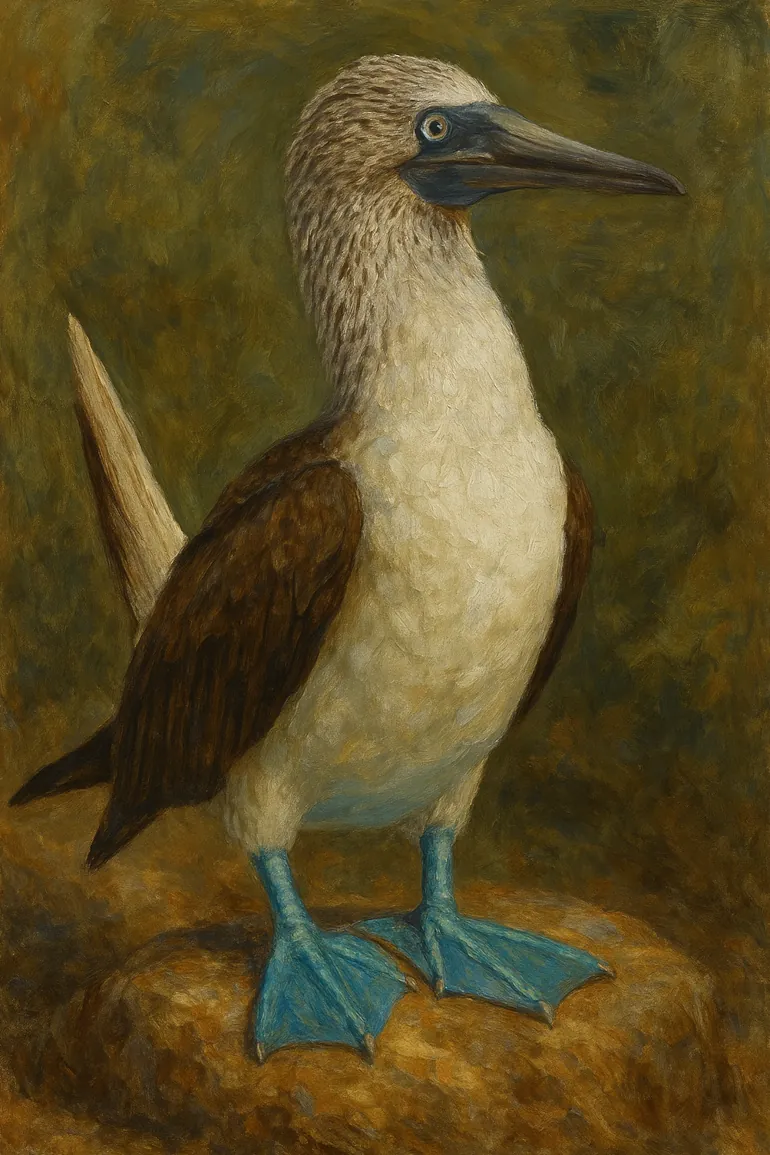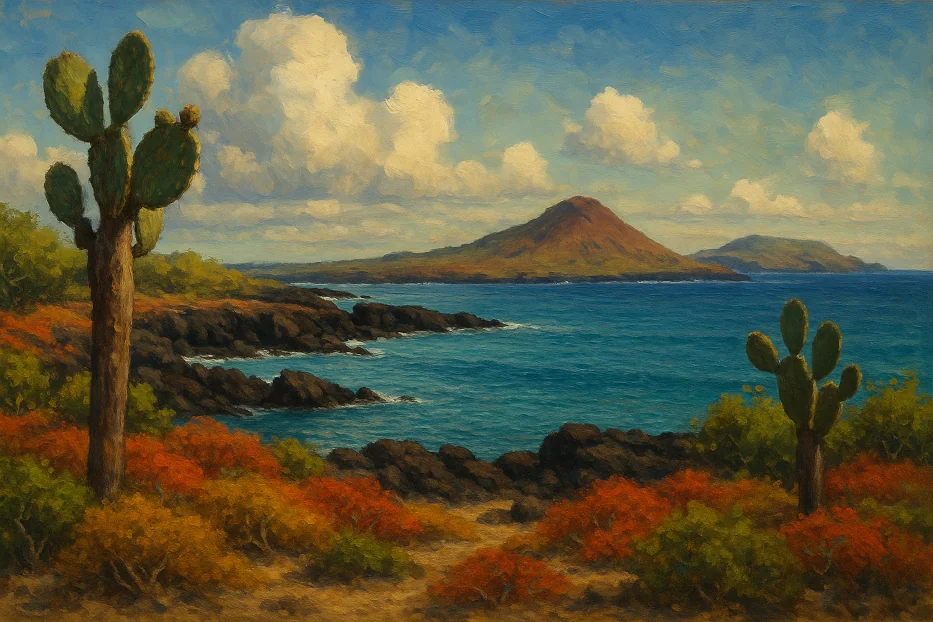The Galápagos Islands, situated 965 kilometers (600 miles) off the coast of Ecuador in the Pacific Ocean, are renowned for their incredible biodiversity and stunning volcanic landscapes.
This archipelago consists of 13 main islands and over 100 smaller islets, making it a unique haven for wildlife and natural beauty. Famous for their extraordinary wildlife and their critical role in the development of Charles Darwin’s theory of evolution, the Galápagos are also recognized as the second most volcanically active archipelago in the world, after Hawaii.
Ecuador claimed the islands in 1832, and they have been under national protection for nearly two centuries, making them an integral part of the country’s natural heritage.
The Galápagos Islands are a remarkable example of nature’s ability to thrive in isolation. Their rich biodiversity, coupled with their evolutionary significance, makes them an invaluable resource for both scientific study and eco-tourism. Although the islands face challenges, their designation as a UNESCO World Heritage Site ensures that conservation remains a top priority, carefully balancing the demands of tourism with the preservation of the archipelago’s unique environments.
For those seeking adventure, a deeper understanding of the natural world, or a rare escape into pristine nature, the Galápagos Islands offer a profound experience unlike anywhere else on Earth.
Table of Contents
How to Get There and What to Expect
Getting to the Galápagos Islands
The journey to the Galápagos Islands begins with a flight from mainland Ecuador. Most visitors depart from either Quito or Guayaquil, heading to one of the two main airports: Baltra Airport (on Santa Cruz Island) or San Cristóbal Airport. The flight takes approximately 1.5 to 2 hours, and from the airport, visitors often travel by ferry or boat to reach their specific destinations within the archipelago.
What to Expect Upon Arrival
Upon arrival in the Galápagos, visitors will be greeted by the islands’ breathtaking landscapes and a commitment to conservation that permeates the region. The archipelago has been a protected environment for decades, with strict regulations in place to preserve its unique flora and fauna. As such, the islands’ unspoiled environment offers a chance to experience nature in its most authentic form.
Volcanic Activity in the Galápagos
The very bones of the Galápagos are forged by fire. Rising from a hotspot deep beneath the Pacific Ocean, the islands are the product of millions of years of volcanic eruptions. Even today, the Galápagos remain the second most volcanically active archipelago on Earth, after Hawaii.
Fernandina Island, the youngest and westernmost island, is home to La Cumbre volcano, which last erupted as recently as 2020, sending rivers of molten lava spilling into the sea. On Isabela Island, six separate volcanoes have sculpted the island’s jagged silhouette, with Sierra Negra boasting one of the largest volcanic craters in the world.
Throughout the archipelago, visitors encounter stark black lava fields, surreal landscapes of twisted rock, and fresh evidence of Earth’s continual transformation, offering a rare glimpse into the planet’s geological heartbeat.
Why the Galápagos Islands Are a Unique Travel Destination
A Living Laboratory of Evolution
The Galápagos Islands played a pivotal role in the development of Charles Darwin’s theory of natural selection. Darwin’s observations of the islands’ diverse wildlife and their adaptation to the unique conditions of each island laid the foundation for his groundbreaking ideas. This evolutionary significance has made the Galápagos not only a living museum of species but also an ongoing example of natural adaptation in real time.

Endemic Species and Biodiversity
The Galápagos Islands are home to more than 9,000 species of plants and animals, many of which are found nowhere else on Earth. Giant tortoises, marine iguanas, and a variety of bird species, such as the iconic blue-footed booby and Galápagos finches, thrive in this isolated ecosystem. These animals have evolved to fit the unique conditions of the islands, making the archipelago one of the most fascinating places for wildlife observation.
Top Things to Do in the Galápagos Islands
Wildlife Watching
The Galápagos Islands offer one of the world’s best opportunities to view wildlife in its natural habitat. The islands are home to species that are accustomed to human presence, allowing for close encounters. Some of the most popular wildlife experiences include:
- Observing marine iguanas basking in the sun.
- Watching blue-footed boobies engage in their elaborate mating dances.
- Snorkeling with sea lions, rays, and even whale sharks in the clear waters.
- Birdwatching, with opportunities to see species like the Galápagos albatross and frigatebird.
Snorkeling and Scuba Diving
For those with a sense of adventure, the Galápagos offers some of the best diving and snorkeling experiences in the world. The waters around the islands are teeming with marine life, from colorful fish to sea turtles and dolphins. Wolf and Darwin Islands, located at the northern end of the archipelago, are famous for their vibrant underwater ecosystems, where divers may encounter hammerhead sharks, whale sharks, and a variety of other species.
Hiking and Exploration
Trekking through the islands offers visitors a chance to experience their geological wonders. The Sierra Negra Volcano on Isabela Island, for example, is one of the largest volcanic craters in the world. Other trails, such as those on Santa Cruz Island, offer stunning views and the opportunity to witness the island’s unique flora and fauna.

Costs of Visiting the Galápagos Islands
Flights and Accommodation
The cost of a trip to the Galápagos begins with flights from Ecuador, which generally range from $300 to $600 USD for a round-trip ticket. Accommodation varies widely, with options ranging from budget hostels at around $50 per night to luxury resorts that can cost upwards of $500 per night. Additionally, travelers can choose to embark on a cruise around the islands, with prices starting at about $1,000 for a 4-5 day itinerary.
Park Entrance Fees
A National Park entrance fee of $200 USD (for adults) is required to visit the islands. This fee is used to support conservation and environmental management efforts on the islands, ensuring that their delicate ecosystems remain protected for future generations.
Practical Considerations
Cuisine in the Galápagos
Cuisine in the Galápagos is deeply influenced by Ecuador’s coastal region, with a focus on fresh, locally sourced seafood. Ceviche, made from raw fish marinated in citrus, and dishes like grilled lobster and shrimp are common. Locro de papa, a hearty potato soup, is a popular dish among locals. On the islands, many meals feature ingredients harvested from the region, making the food both fresh and sustainable.
Cash, Transport, and Connectivity
It is important to carry cash when traveling to the Galápagos, as most places do not accept credit cards. Visitors will find ATMs in major towns, but it is advisable to bring cash from the mainland to avoid high withdrawal fees. Water taxis and ferries are the primary modes of transport between islands, while taxis and buses are common on the larger islands.
Wi-Fi is available in some parts of the archipelago, though it can be slow and unreliable, especially on remote islands. For a truly unplugged experience, visitors may choose to leave their devices behind and immerse themselves in the natural world.
Conservation Challenges
The Galápagos Islands face several environmental challenges, most notably the introduction of invasive species. Efforts to protect native flora and fauna are ongoing, with strict regulations in place to manage tourism and reduce human impact on the islands. Galápagos National Park and marine reserves help regulate tourism and minimize the effects of climate change, ensuring that this unique ecosystem remains as pristine as possible.
Travelers are encouraged to respect all guidelines, such as avoiding the introduction of non-native species and adhering to waste management practices. The Galápagos experience is a reminder of the delicate balance between humans and the natural world.
The 5 Largest Islands of the Galápagos (Table)
| Rank | Island | Area (sq km) | Area (sq mi) | Key Features |
|---|---|---|---|---|
| 1 | Isabela | 4,586 | 1,771 | Largest island; Sierra Negra Volcano, giant tortoises. |
| 2 | Santa Cruz | 986 | 381 | Charles Darwin Research Station, Tortuga Bay. |
| 3 | Fernandina | 642 | 248 | Volcanic activity, marine iguanas. |
| 4 | San Cristóbal | 558 | 215 | Interpretation center, Puerto Baquerizo Moreno. |
| 5 | Floreana | 173 | 67 | Historic sites, beaches, sea lions. |

